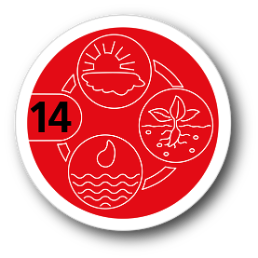- What indicators, impact models and data surveys are suitable for the development and updating of agri-environmental monitoring activities? Does the adequate recording of existing or supplementary environmental impacts and the resource efficiency of the agricultural systems require the current monitoring programme to be adapted?
- What conclusions do the calculation/interpretation of the AEIs, the national emission inventories and environmental reports enable us to reach, bearing in mind the new results of 2018-2021? Where is intervention necessary (for additional in-depth analyses or for the taking of precautionary measures/implementation of solutions), and where can the success of measures already implemented be felt? Are there gaps in the achievement of the objectives, and to what extent can these be explained? What changes in the environmental impacts of the agriculture and food sector are to be expected as a result of the amendment of certain agricultural-policy regulations?
- What, is the actual extent of individual emissions or resource efficiency in the Swiss agricultural sector, bearing in mind the different site and farm conditions? What are the most important causes, interactions and levers in the system?
- What are the practicable solutions/measures for the political decision-makers and farms that are capable of increasing efficiency or reducing emissions from the agriculture and food sector, and what is the extent of their impact and cost? Are there any synergies with or side-effects for the environment (pollution swapping)? What decision-making aids can be provided to stakeholders?
- What indicators, impact models and aggregation processes are suitable for assessing Swiss farms in terms of their sustainability?
Assessing sustainability and eco-efficiency in agriculture and highlighting potential for improvement

Agriculture exploits natural resources with the aim of food production whilst exerting an influence on the environment and the remaining functions of the agroecosystem. Although obvious advances have been achieved in the past, policymakers and society expect the agriculture and food sector to continue to improve its sustainability and to close up the expected gaps in terms of environmental targets, resource efficiency and climate strategy.
In order to assess the impact of previous measures and identify the need for action, we must be able to record and model the extent and development over time of the environmental impacts and material flows of the agriculture and food sector with the aid of suitable indicators, inventories and monitoring activities.
New findings on main causes, interactions and influencing factors for the relevant agricultural emissions form the basis for the targeted development of decision-making tools and solution strategies for policy-makers and practitioners, so that the resource efficiency of the agriculture and food sector can be optimised with regard to location and environmental pollution can be reduced. Comprehensive life-cycle analyses with assessments of all relevant environmental impacts form a significant basis for the comparison of solution strategies.
In addition, a concept for the system-oriented assessment of farms or their ecodesign in terms of the three pillars of sustainability is to be developed, with the aim of acquiring holistic and implementable recommendations for the further development of the agricultural sector.
Scientific Objectives and Research Questions
Research Projects
OverviewFurther Information





